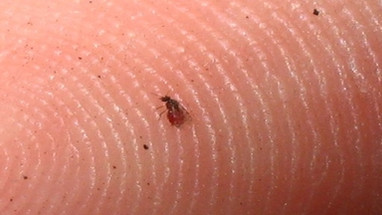9th Feb 2016
Are Megacatch Mosquito Traps Effective
Mega-Catch traps effective against biting insects and midges
CO2 trapping is one of the most effective methods of dealing to these little bloodsuckers, often referred to as the vampires of the insect world. Research has shown that biting midges, like many species of mosquito, are attracted to CO2. However it’s not the only cue they follow, they’re also attracted to light, especially UV light. The Ultra trap by Mega-Catch™ appears to be one of the safest, most effective traps on the market, and one that combines both CO2 with UV light capability. Mega-Catch™ traps have been scientifically tested and proven to kill mosquitoes, biting midges (no-see-ums) black flies and sand flies, and more importantly, do so without the use of insecticides, fogs or sprays. USDA entomologist, Dr Daniel Kline conducted comparison tests using Mega-Catch™ Ultra traps in the Lower Suwannee Wildlife Refuge, on the west coast of Florida, and recorded the capture of 10,000 biting midges just in one day. Biting midges are prolific at this site and cause extreme annoyance to both nearby residents and tourists.
Biting midges are also known as ‘no-see-ums’ in North America, as ‘punkies’ in the Northeast; ‘five-O’s in Florida and Alabama (refers to their 5 pm biting habit), ‘pinyon gnats’ in the Southwest, and ‘moose flies’ in Canada.
Less than 1/8 inch long, biting midges belong to the insect order Diptera, (two-winged flies) family Ceratopogonidae, genus Culicoides. Just like their close relative the mosquito, warm weather will bring out the biting midges, or “no-see-ums” as their tiny size has nicknamed them. Like mosquitoes, only female midges bite, taking blood to provide a source of protein for their eggs. The greatest biting activity is typically around dawn and dusk.
In the U.S. biting midges are primarily regarded as a nuisance. The four most important, in order of their pest ranking, are Culicoides furens, C.mississippiensis, C.hollensis and C.barbosai. Like other blood feeding Diptera i.e. mosquitoes, Culicoides species are vectors or disease carriers that can cause harm to both humans and animals. Their bites are painful and irritating, usually starting as a small red welt or water-filled blister that itches. Once scratched, the welt can break open and bleed, but the itching usually continues. Allergic or sensitive individuals can develop long-lasting painful and itchy lesions. Bite treatments recommended include topical cortisone creams and non-steroidal anti-inflammatory drugs such as aspirin or ibuprofen
When the biting midge snacks on livestock this can result in the transmission of a disease called bluetongue, which is found in cattle and sheep. Many countries that are bluetongue free prohibit the movement of livestock from bluetongue endemic regions. The annual economic damage in lost trade is in the millions of dollars. The biting midge can also transmit African Horsesickness and another disease called Epizootic Hemorrhagic Disease (EHD) to horses. EDH can prove lethal to deer.
No Money for Midge Control
No-see-ums are especially troublesome in coastal areas, and particularly abundant around mangrove swamps and salt marshes. They love Florida. With its temperate climate and regular rainfall, Florida provides ideal habitat for both mosquitoes and midges, and is home to 47 species of the little biters; only seven of which are significant human pests. Unfortunatelymosquito control districts in Florida are not funded to provide control of biting midges.
Control of adult biting midges with insecticide sprays has had limited success. Targeting the adult population is extremely difficult because they reproduce at such a rapid rate that there’s no way to keep up. It would require insecticide applications on a daily basis in some areas, and this just isn’t efficient or environmentally sound. Many government agencies that provide mosquito control services, receive a number of complaints and requests for help in dealing with biting midges. However, most of the programs are not mandated or allowed to respond by providing any form of midge control.
DIY Protection & Prevention
Bite protection is essential when dealing with no-see-ums. If you can’t (or don’t want to) stay indoors, wear light colored clothing; preferably long pants and long-sleeved shirts, shoes and socks, and apply insect repellents when venturing out. Typically those containing DEET are also labeled for use against no-see-ums. Use them before exposure to the biting midges, and apply according to the label.
Around the home, installing window and door screens will exclude these pests. However, as most biting midges can pass through 16-mesh insect wire screen and netting, a smaller mesh size, is required and becomes even more effective when sprayed with a coating of repellent.
CO2 trapping is considered the most effective method of reducing biting midge populations and the user friendly design of the Ultra trap, means the insects are trapped in a catch bag or wet container for quick, clean and easy disposal; you won’t even get blood on your hands.

